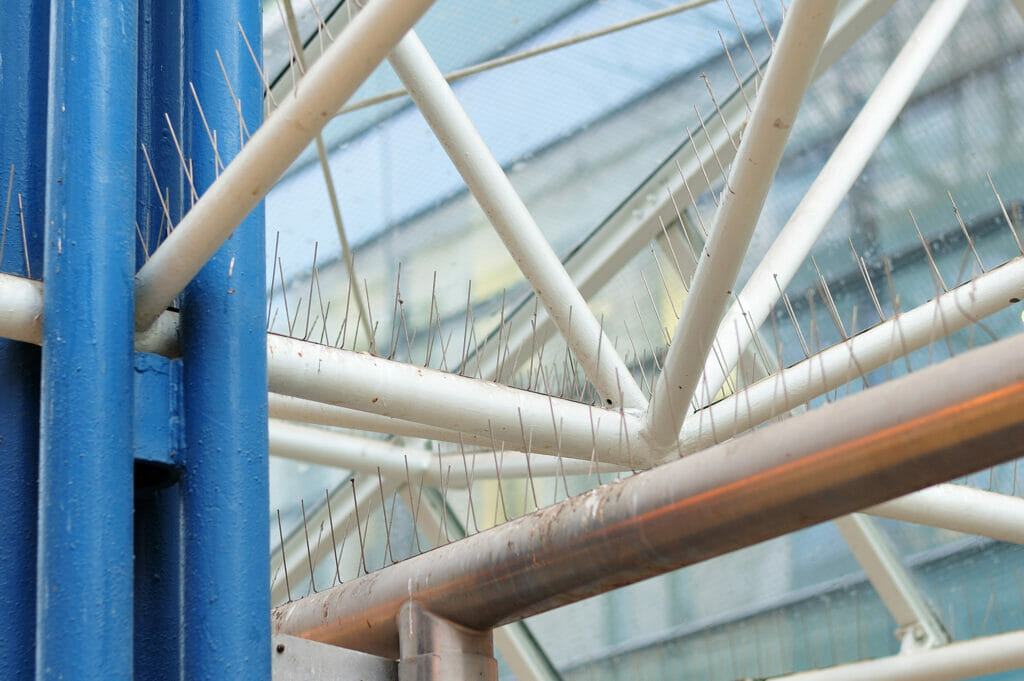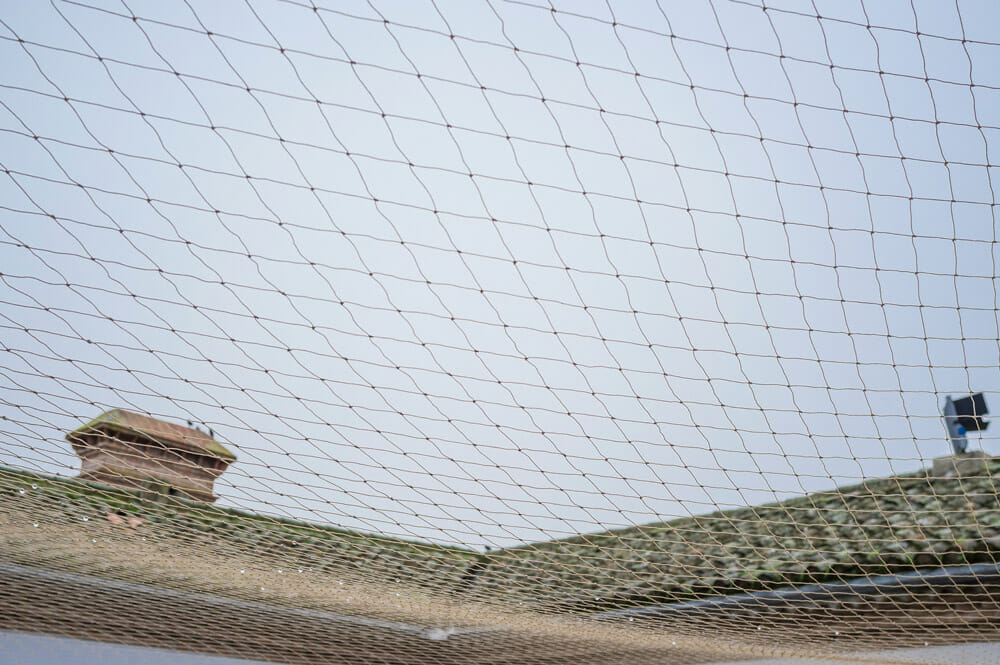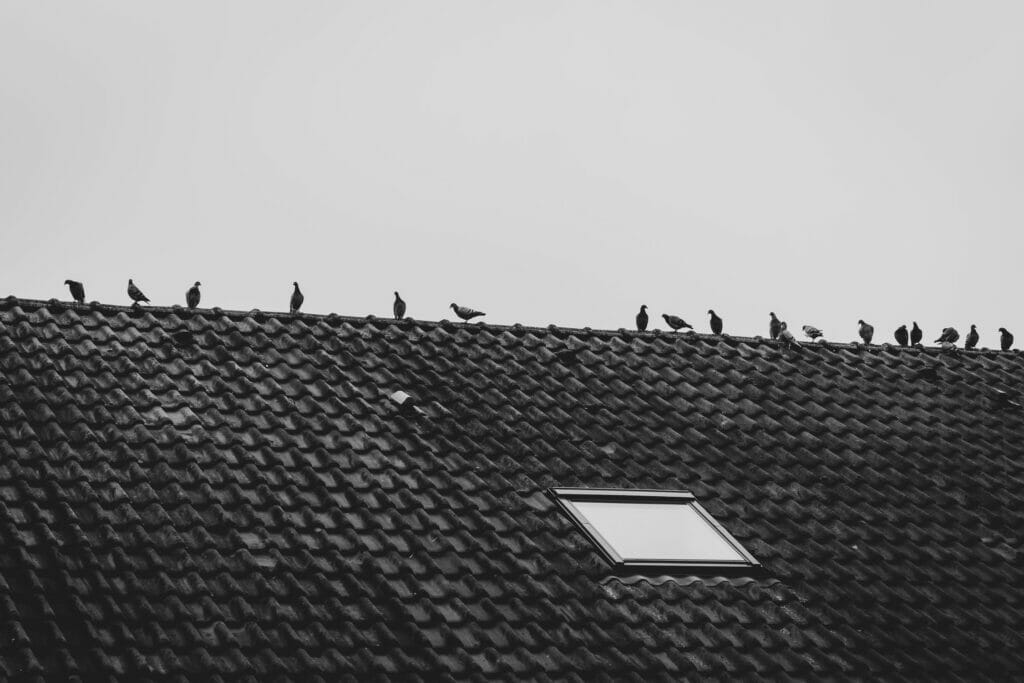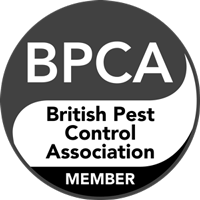Table of Contents
Poor old pigeons get a bad press. They are actually highly intelligent creatures. However, with the number of diseases they carry and the negative stigma around them, naturally, we want them gone. But how do we get rid of pigeons? The short answer? Humanely! Any other way would be breaking the law.
What are Pigeons?
With 18 million feral pigeons alone in the UK, more than likely, you’ll have seen one or two. You’ve probably even heard them referred to as a ‘flying rat’ at some point. But what are they? Are pigeons vermin? Or just a podgy bird that says “coo”? Funnily enough, it’s not too far off. Appearance-wise, pigeons, like other birds, have a relatively small head and short legs with a somewhat oval body shape. They tend to be grey and black, but some species have grey and purple accents. In terms of classification, it might surprise you to know that due to their similarities, pigeons are linked with doves.

Types of Pigeons
Without a doubt, the most common type of pigeon in the UK is the feral pigeon. Interestingly, whilst ‘feral pigeon’ is the frequently used title, these birds are also called ‘Rock Doves’. Feral pigeons have blue and purple colouring, typically around their necks and can live for up to ten years. Whilst Rock doves are the main focus of this post, there are other pigeons breeds around. King, Racing and Fancy pigeons are bred domestically; other similar pigeon breeds include the common wood pigeon and band-tailed pigeons.
Pigeon Nests
Of course, if you’re suspicious of pigeons in your home or garden, knowing where they nest may help you to find them. Pigeons have relatively simple requirements for nesting; they require a dry and flat surface that is preferably protected from the elements. Of course, being birds, they often look to nest fairly high up too. The prime locations around your property for pigeon nests are attics, roofs and ledges. However, do not mess with the bird’s nest. It is against the law to disturb or destroy them without a license. Instead, it may be worth removing additional nesting materials from your property to stop the nests from expanding.
Getting rid of Pigeons
So how do you get rid of pigeons? It’s always best to start with an option that will not harm the animal in question. Luckily, multiple harmless methods are available to keep pigeons away from your home or business; even better, visit our pigeon control page and leave it to the professionals. The idea of harmless removal strategies is to make things awkward for pigeons and take advantage of their dislikes.
No equipment strategies
To get rid of pigeons without hurting them, It goes without saying that if the affected area has attractive features to birds, bird feeders or baths, for example, it may be worth getting rid of them. Furthermore, pigeons are generally herbivorous creatures, and food is more important than a potential threat. Therefore, removing food sources and items like seeds and fruits from the affected area may help get rid of them. Just make sure you never feed pigeons otherwise they’ll keep coming back.
Obstacles
If the area affected by pigeons is your garden, here are some words of advice. When adding bird facilities to your garden, you can’t choose which birds use them. However, you may not want to drive away all the smaller, cuter birds from visiting. So it could be worth investing in a pigeon proof bird feeder. These feeders are designed to have smaller holes to feed through to make sure you never feed pigeons and they can’t reach through with their bigger beaks! Then, once the pigeons are gone, you can also reintroduce your birdbaths and have as many bird parties as you want.
Scare factor
Some home remedies to deter pigeons would be a pigeon specific ‘scarecrow’. Pigeons are prey to large birds of prey like eagles and hawks; therefore, a life-size model in the affected area may help to scare pigeons away from your home, especially if you can find one that also makes noises! An even simpler alternative to get rid of pigeons is to use reflective surfaces or ultrasonic devices. When around bright, flickering lighting, the birds become disorientated, so they should take off pretty sharpish (albeit, maybe not in a straight line).
Another way to play on a pigeon’s sense of fear is with the use of ultrasound. Like other animals, pigeons have a broader range of hearing than us allowing them to listen to the bird-call and sounds of both friends and potential predators. Therefore, the ultrasound machine will replicate the sounds of the predators and all pigeons within an acre area will be scared away. Don’t forget, it’s best to leave these devices on for as long as possible; that way, if the pigeons return, they will be scared away again.
Frustration
In addition to scary and shiny objects, there are other control methods you can take. Alternatively, to disorientating a pigeon is to remove its ‘home’ comforts. Methods of doing this include anti-roosting spikes and bird wire. Essentially, these two options create a frustrating living environment. Don’t forget, the best places for these are ledges, roofs, sills and guttering.
The spikes are perfectly harmless but prevent pigeons without hurting them by stopping them from perching in their favourite places. They are reasonably aesthetically pleasing thanks to their see-through design and are even pretty low maintenance. DIY kits can be purchased, but don’t forget, the spike strips should be expertly placed on areas such as window sills, so contact us, and we’d be more than happy to fit some for you; alternatively, visit our Bird Spike Services page for more information on how to keep pigeons away.

The stainless steel wire works similarly. If installed along commonly used ledges, pigeons can’t keep their balance when they land; the frustration (and embarrassment) will help to drive them away. For more information on stopping pigeons from perching, please have a look at our Post and Wire Deterrent page.
Pigeon Proofing
An effective way to get rid of pigeons is to stop them from setting up camp. For instance, control methods such as bird netting or spike strips will block pigeons from accessing an area, so they have to find different roosting areas. Visit our bird netting page for more help. Don’t forget, pigeons, like other birds, are partial to a chimney, so don’t neglect this area. Of course, be cautious of your safety, but fitting a chimney cap may help resolve the situation (just make sure you’re not trapping any birds inside before installing it!).

Your chimney isn’t the only thing on your roof that you may need to deter pigeons from. For example, if you have solar panels, pigeons may nest underneath them. The build-up of animal guano and their eggs can result in electrical and structural damage to your panels. Essentially, pigeons under your solar panels can have some hefty financial implications. For more information on appropriately protecting your solar panels, please visit our pigeon-proofing for solar panels page.
Electric Deterrents
At Integrum, one of the services we offer to keep pigeons away is Avishock electric track. Although it may not initially sound it, Avishock has been proven to be a harmless method of pigeon control. The system is made from stainless steel and placed in areas such as window sills and is placed the same as wire and gel but works slightly differently. The shock delivered to the birds is not harmful at all; however, it is uncomfortable. Since pigeons are such intelligent creatures, it doesn’t take them long to work out; they need to find different roosting areas.
Luckily, Avishock can even be used around curves and bends, so it’s very likely to work for your property, whatever the architecture! Still not convinced? Not only is the method pigeon friendly, but environmentally friendly too; Avishock tracks are solar-powered (they even help your wallet!).
What is the purpose of pigeons?
You may not realise it, but pigeons are actually very intelligent creatures. Thanks to their sense of direction, they’ve been used for racing purposes and to send messages. But how smart are they? Well, they’re the only non-mammal creature in the world to be able to recognise themselves in the mirror. But, they cannot just recognise their own faces; they can identify and memorise the faces of humans who treat them well and poorly. So, it may be worth bearing that in mind when you’re getting rid of them; a safe and human approach may stop you from becoming a target from above.
As “flying rats” indicates, pigeons come with a risk of disease. Although they don’t all pose a threat to humans, pigeons can carry almost sixty different conditions at a time. No worries, though, right? Avoid pigeons, and I can’t get any of the diseases? Unfortunately, you can catch diseases from pigeons without ever coming into direct contact with them. Instead, diseases can transfer into, and become carried by highly acidic pigeon poop (guano) which dries over time. Once the droppings have dried out, they disintegrate into dust and can be ingested without knowing.
What diseases do pigeons carry?
Some of these you will have heard of, and some, maybe not. So here are the most problematic diseases you could catch from a pigeon:
- Candidiasis: Simply put, a fungal infection from yeast affecting various parts of the body like the reproductive system, mouth, skin and abdomen. Should the infection bury deeper in your body and develop into “Invasive Candidiasis”, the consequences can be potentially fatal.
- Cryptococcosis: This condition is a fungal infection caused by yeast that typically begins in the lungs. People can pass it to others without knowing too. From here, the infection can spread to other areas like the skeleton, nervous system or brain. Cryptococcosis is a potentially fatal infection.
- Histoplasmosis: This is a fungal infection caused by Histoplasma inhalation that targets the lungs. A large amount of fungus is required to initiate the infection, and it typically resolves itself. The symptoms; fatigue, fever, headaches and body pains tend to mimic general illnesses and may not occur until three weeks after exposure.
- E-coli Infection: An infection caused by the Escherichia-coli bacteria. Although the human body already contains some strains of e-coli, the variant from pigeons can cause diarrhoea (which may even have a bloody presentation), vomiting, stomach cramps and general fatigue. Symptoms typically last no longer than one week.
How do I protect myself from diseases?
It’s easier than you might think to protect yourself from the risks of pigeon guano. We use masks as protection within the pest control industry when in confined spaces potentially containing pigeon droppings. However, this isn’t necessary when cleaning pigeon guano in an open-air environment. When trying to clean pigeon poo, here is our advice:
- Wet the droppings first; this way, they’re less dusty, and you’re less likely to inhale it.
- Wear protecting gloves.
- Pop your clothes and gloves in the wash after you’ve finished to be sure.
- Please hire a professional to keep pigeons away. Call us on 0204 566 5522 to discuss all your bird dropping removal requirements.
What does the law say about getting rid of pigeons?
Just like other aspects of life, there are laws protecting pigeons and getting rid of them. The primary legislation in this field is the Wildlife and Countryside Act 1981; this act essentially serves the purpose of protecting the nests, eggs and lives of wild birds. Under the 1981 law, it is stated that the killing or injuring of any bird is only permissible with a legal and relevant license.
The Animal Welfare Act of 2006 strengthens these laws and makes specific statements:
- Lethal pigeon extermination methods should only be used once ALL non-lethal methods have been tried (and failed).
- Extermination is acceptable if protecting the public’s health and safety.
- Pigeon deterrent methods cannot trap and subsequently cause suffering or death to pigeons.
- A pigeon should not suffer during the extermination technique.
As of June 2021, the law protects all bird’s nests. Therefore, keeping birds away is not as easy as simply moving their nest. Hence, the best way to get rid of pigeons is to deter them from your property, not physically move them.

General Licenses
It’s not as easy as you think to apply for a license. The application criteria are reasonably extensive and require full transparency. The applicant must provide:
- Their full personal and contact information.
- Information surrounding the target site location.
- What bird breeds are being targets, and how will they be killed.
- The landowner’s name and whether you have their permission.
- A complete list of all the non-lethal methods of removal they have already tried (and why they were ineffective).
- Furthermore, when carrying out acts protected by license, total records of events should be recorded.
So, who can apply for a general licence? The licences are available to people with a purpose for killing pests; therefore, predominantly, farmers/landowners, pest controllers and gamekeepers. Any person applying for a licence who is not the landowner must have their direct permission.
The killing of pigeons is closely monitoring through frequent adjustments to the licensing standards. The most recent change was in January 2021. So, is it ‘one licence suits all’? Actually, no. Applicants can apply for four-set licences. The necessary licence depends on the reason for the extermination. GL40 does NOT apply to pigeons.
- GL33 – Allows for the trapping of wild birds, NOT killing; the traps must be safe and humane.
- GL40 – Allows the killing or removal of bird species for the protection of wild birds, plants and animals.
- GL41 – Allows the killing or removal of bird species in the interest of public health and safety; apples to feral pigeons.
- GL41 – Allows the killing or removal of bird species to prevent disease spread or damage; applies to feral pigeons and woodpigeons.
What do the Licences Mean?
Under a general licence, there is an extensive range of methods to keep them away. For example, GL41 and GL42 allow license holders to capture and kill pigeons and their eggs and remove, damage or destroy pigeon nests. However, don’t forget, harmless methods must have been tried and failed before using extermination. Furthermore, legally, you must obtain a license to lethally get rid of pigeons; breaking the law could land you an unlimited fine or even a six-month prison sentence.
Traps
Under the GL33, feral pigeons can be live-trapped and subsequently released. However, it’s not quite as simple as it sounds. To adequately live trap, you must meet the requirements. For instance, the trap must be suitably constructed and must have steps taken to minimise the risk of accidental capture of non-target creatures. Similarly, the trap must be of a specific design to minimise potential harm to pigeons whilst inside. So what traps can I use under GL33? Only five cage types are permitted.
- Walk-in multi-catch cage trap
- Larsen trap
- Larsen mate trap
- Larsen pod trap
- Pigeon trap
For more information on these, take a look at the government site.
Lethal Techniques
Firstly, and most importantly, you must remember that lethal does not mean inhumane. If a pigeon is killed, it must be a humane and quick death. Furthermore, there must be an existing risk. For instance, pigeons are eating crops as they grow. You cannot kill pigeons purely in anticipation of them being a nuisance.
How can you get rid of pigeons with a license? In addition to traps, under GL41 and GL42, shooting pigeons with any firearm is permitted; however, remember that deaths must be swift. You can also use hand-held or hand-propelled nets on pigeons who are perching (not whilst flying). Finally, taking and killing authorised birds by hand is also allowed (so long as it is humane). However, the potential for pain and accidental killing of other birds means to feed pigeons poison is not permitted.
So how do you get rid of pigeons? The truth is, you’re far from short on options. With so many methods available to stop pigeons without hurting them, such as spike strips and pigeon netting, even without a license, it can be challenging to know where to start. If you get stuck we’re always available to help with any inquiries you may have; we offer pigeon control in London, Surrey and all the southeast of England. Contact is available on 0204 566 5522 or you can email us at [email protected].




